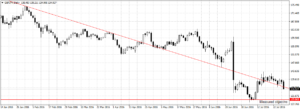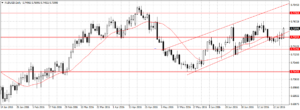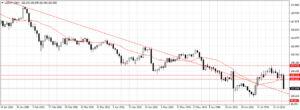Global risks and financial markets’ volatility increased after Janet Yellen led FOMC held rates unchanged on Wednesday, citing global uncertainty and inconsistency in the economic figures. The situation was further compounded by the Bank of Japan decision to keep widely speculated policy rate unchanged but increased exchange traded funds by $26 billion a year.
Last week was packed with mixed economic report, the US economy expanded at a 1.2 percent rate in the second quarter of the year, falling below 2.6 percent forecast by economists. While Unemployment claims rose 14,000 to 266,000 in the week ending 22 July, but housing sector remains moderate with a solid consumer confidence.
Overall, the US economic outlook remains mixed, one because the Fed said risks to the US economy had reduced but policy makers need more time to assess Brexit possible impacts on global economics. Two, if the risks to the US economy has subsided while leaving rates unchanged?, although the Chair Janet Yellen reiterated that the Fed will raise borrowing costs gradually, but the financial markets already priced out that possibility this year and interpreted the comments as less hawkish, sending the US dollar down against most of its counterparts on Friday. This week, I will be looking at GBPJPY, AUDUSD, and USDJPY.
GBPJPY
The UK economy is enmeshed in a negative perception after the Britons exit the European Union, even though post-Brexit effect is yet to crystallize, investors and businesses are already making adjustments to their investments and holding back on long term plans to avoid being caught up in potential recession. Although, the GDP rose more than expected in the second quarter of the year, the data were collected prior to Brexit. While few data collated ‘post-Brexit’ have shown signs of slowdown in consumer spending that has been supporting the economy since oil glut started.

Click to enlarge
On the other hand, the yen continued to gain after the Bank of Japan limited stimulus expansion to manage investors’ overzealous activities that could daunt whatever confidence is left of the economy. Technically, the GBPJPY has been on a downward trend since 25 June 2015, but with the yen renewed gain below 135.95 price level, the GBPJPY might have started continuation that will open up 129.86 support level. As long as price remains below 135.95 resistance level, I remain bearish on this pair with 129.86 as target.
AUDUSD
The Australian dollar is overpriced and has forced the Reserve Bank of Australia to consider additional rate cuts to pressure costs and boost consumer prices. Currently, traders have priced in 25 basis points cut to 1.5 percent record low against RBA monetary policy meeting on Tuesday.

Click to enlarge
The Aussie dollar has gained around 528 pips since May 24 to peak at 76.71 cents against the dollar. If the Reserve Bank of Australia cut interest rates by 25 basis points to 1.50 percent. The AUDUSD pair is expected to plunge below ascending channel started in May as shown above. A sustained break of 0.7505 support level should attract enough sell orders to force 0.7379 first target, and 0.7143 second target in the days to come. So I remain bearish on AUDUSD.
USDJPY
Since both the Fed and Bank of Japan failed to impress investors this pair has lost over 363 pips. As long as 104.25 resistance level holds. I am bearish on this pair with 99.16 as the target.

Click to enlarge